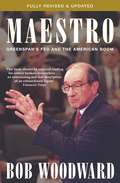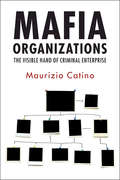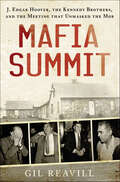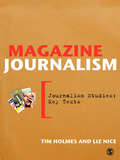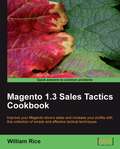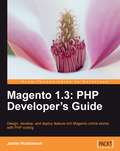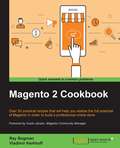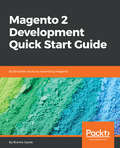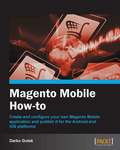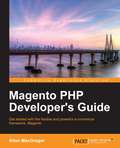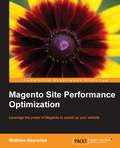- Table View
- List View
Maestro Pizza (F): A New Direction
by Ramon Casadesus-Masanell Fares KhraisMaestro pizza opened its first store in 2014 after its founder, Khalid Al Omran, recognized an opportunity in Saudi Arabia to offer high quality pizza at affordable prices. The business grew rapidly and under the radar at first, but soon enough caught the attention of international pizza giants who had been operating in the country for nearly two decades. That was when Maestro found itself locked into a costly, seemingly relentless, multi-year marketing and pricing war with the market leader at the time; Domino's pizza. This series of cases (from A to H) chronicles Maestro's journey from inception up to 2020 and the various challenges it faced. This multi-part case study provides students with the opportunity to reflect at key inflection points for Al Omran and his team as a result of the competition with Domino's and changing market conditions.
Maestro Pizza (G): Corona, Time for Agility
by Ramon Casadesus-Masanell Fares KhraisMaestro pizza opened its first store in 2014 after its founder, Khalid Al Omran, recognized an opportunity in Saudi Arabia to offer high quality pizza at affordable prices. The business grew rapidly and under the radar at first, but soon enough caught the attention of international pizza giants who had been operating in the country for nearly two decades. That was when Maestro found itself locked into a costly, seemingly relentless, multi-year marketing and pricing war with the market leader at the time; Domino's pizza. This series of cases (from A to H) chronicles Maestro's journey from inception up to 2020 and the various challenges it faced. This multi-part case study provides students with the opportunity to reflect at key inflection points for Al Omran and his team as a result of the competition with Domino's and changing market conditions.
Maestro Pizza (H): Making the Best of the Situation
by Ramon Casadesus-Masanell Fares KhraisMaestro pizza opened its first store in 2014 after its founder, Khalid Al Omran, recognized an opportunity in Saudi Arabia to offer high quality pizza at affordable prices. The business grew rapidly and under the radar at first, but soon enough caught the attention of international pizza giants who had been operating in the country for nearly two decades. That was when Maestro found itself locked into a costly, seemingly relentless, multi-year marketing and pricing war with the market leader at the time; Domino's pizza. This series of cases (from A to H) chronicles Maestro's journey from inception up to 2020 and the various challenges it faced. This multi-part case study provides students with the opportunity to reflect at key inflection points for Al Omran and his team as a result of the competition with Domino's and changing market conditions.
Maestro Pizza: Coming in Hot!
by Ramon Casadesus-Masanell Fares KhraisMaestro pizza opened its first store in 2014 after its founder, Khalid Al Omran, recognized an opportunity in Saudi Arabia to offer high quality pizza at affordable prices. The business grew rapidly and under the radar at first, but soon enough caught the attention of international pizza giants who had been operating in the country for nearly two decades. That was when Maestro found itself locked into a costly, seemingly relentless, multi-year marketing and pricing war with the market leader at the time; Domino's pizza. This series of cases (from A to H) chronicles Maestro's journey from inception up to 2020 and the various challenges it faced. This multi-part case study provides students with the opportunity to reflect at key inflection points for Al Omran and his team as a result of the competition with Domino's and changing market conditions.
Maestro: Greenspan's Fed and the American Boom
by Bob WoodwardIn eight Tuesdays each year, Federal Reserve chairman Alan Greenspan convenes a small committee to set the short-term interest rate that can move through the American and world economies like an electric jolt. As much as any, the committee's actions determine the economic well-being of every American. The availability of money for business or consumer loans, mortgages, job creation and overall national economic growth flows from those decisions. Perhaps the last Washington secret is how the Federal Reserve and its enigmatic chairman, Alan Greenspan, operate. In Maestro, Bob Woodward takes you inside the Fed and Greenspan's thinking. We listen to the Fed's internal debates as the American economy is pushed into a historic 10-year expansion while the world economy lurches from financial crisis to financial crisis. Greenspan plays a sometimes subtle, sometimes blunt behind-the-scenes role. He appears in Maestro up close as never before -- alternately nervous and calm, plunging into mathematics one moment and politics the next, skeptical, dispassionate, always struggling -- often alone. Maestro traces a fascinating intellectual journey as Greenspan, an old-school anti-inflation hawk of the traditional economy, is among the first to realize the potential in the modern, high-productivity new economy -- the foundation of the current American boom. Woodward's account of the Greenspan years is a remarkable portrait of a man who has become the symbol of American economic preeminence.
Maestro: Greenspan's Fed and the American Boom
by Bob WoodwardIn eight Tuesdays each year, Federal Reserve chairman Alan Greenspan convenes a small committee to set the short-term interest rate that can move through the American and world economies like an electric jolt. As much as any, the committee's actions determine the economic well-being of every American. The availability of money for business or consumer loans, mortgages, job creation and overall national economic growth flows from those decisions. Perhaps the last Washington secret is how the Federal Reserve and its enigmatic chairman, Alan Greenspan, operate. In Maestro, Bob Woodward takes you inside the Fed and Greenspan's thinking. We listen to the Fed's internal debates as the American economy is pushed into a historic 10-year expansion while the world economy lurches from financial crisis to financial crisis. Greenspan plays a sometimes subtle, sometimes blunt behind-the-scenes role. He appears in Maestro up close as never before -- alternately nervous and calm, plunging into mathematics one moment and politics the next, skeptical, dispassionate, always struggling -- often alone. Maestro traces a fascinating intellectual journey as Greenspan, an old-school anti-inflation hawk of the traditional economy, is among the first to realize the potential in the modern, high-productivity new economy -- the foundation of the current American boom. Woodward's account of the Greenspan years is a remarkable portrait of a man who has become the symbol of American economic preeminence.
Maestros del juego: 18 reglas para ganar la partida de los negocios
by Jorge González Pablo FoncillasEl libro para aquellos que gestionan un negocio y nunca tuvieron tiempo de leer su manual de instrucciones. Todos los negocios son diferentes. Y todos iguales porque comparten un mismo objetivo: crear clientes. Este libro nos muestra las palancas que hay que mover para conseguirlo: los análisis fundamentales, la elección de la estrategia, las decisiones clave para que una empresa comercialice sus productos de forma exitosa.Es el apasionante Juego de los negocios, con su tablero, piezas y jugadas más importantes. Cada capítulo plantea una cuestión básica en el desarrollo del juego y concluye con una de las 18 reglas para ganar la partida de los negocios. Se trata de un manual de instrucciones práctico y accesible para tener una visión completa de la estrategia empresarial y de las políticas de marketing y ventas que la hacen efectiva.Para ver cómo se aplican estas reglas en la realidad, los autores se internan en los teatros de Broadway, los casinos de Las Vegas, Netflix, la NFL, la Formula 1, el mundo de los videojuegos, el cine o la música. Todos esos negocios disputan encarnizadas partidas en sus hipercompetitivas industrias y crean millones de clientes, demostrando, año tras año, que son auténticos maestros del juego. «Solo hay una definición válida de lo que es el propósito de un negocio: crear clientes. Por esta razón, un negocio tiene dos -y solo dos- funciones básicas: el marketing y la innovación». PETER DRUCKER, The Practice of Management
Mafia Cop: The Two Families of Michael Palermo; Saints Only Live in Heaven
by Richard CaganDetective Michael Palermo built his career on his unique ability to inhabit two worlds at once: the world of law enforcement and the underworld of New York’s crime family organizations. Palermo participated in over two thousand arrests while maintaining close relationships with the kingpins of organized crime—ties that allowed him to stay one step ahead of the rest of the New York City Police Department. This true crime drama takes you inside the police force at its most corrupt and into the dark and dirty world of dons, consiglieres, underbosses, button men, soldiers, and cowboys.
Mafia Organizations: The Visible Hand of Criminal Enterprise
by Maurizio CatinoHow do mafias work? How do they recruit people, control members, conduct legal and illegal business, and use violence? Why do they establish such a complex mix of rituals, rules, and codes of conduct? And how do they differ? Why do some mafias commit many more murders than others? This book makes sense of mafias as organizations, via a collative analysis of historical accounts, official data, investigative sources, and interviews. Catino presents a comparative study of seven mafias around the world, from three Italian mafias to the American Cosa Nostra, Japanese Yakuza, Chinese Triads, and Russian mafia. He identifies the organizational architecture that characterizes these criminal groups, and relates different organizational models to the use of violence. Furthermore, he advances a theory on the specific functionality of mafia rules and discusses the major organizational dilemmas that mafias face. This book shows that understanding the organizational logic of mafias is an indispensable step in confronting them.
Mafia Summit: J. Edgar Hoover, the Kennedy Brothers, and the Meeting That Unmasked the Mob
by Gil ReavillThe true story of how a small-town lawman in upstate New York busted a Cosa Nostra conference in 1957, exposing the Mafia to America.In a small village in upstate New York, mob bosses from all over the country—Vito Genovese, Carlo Gambino, Joe Bonanno, Joe Profaci, Cuba boss Santo Trafficante, and future Gambino boss Paul Castellano—were nabbed by Sergeant Edgar D. Croswell as they gathered to sort out a bloody war of succession.For years, FBI director J. Edgar Hoover had adamantly denied the existence of the Mafia, but young Robert Kennedy immediately recognized the shattering importance of the Apalachin summit. As attorney general when his brother JFK became president, Bobby embarked on a campaign to break the spine of the mob, engaging in a furious turf battle with the powerful Hoover.Detailing mob killings, the early days of the heroin trade, and the crusade to loosen the hold of organized crime, this momentous story will captivate fans of Gus Russo and Luc Sante. Reavill scintillatingly recounts the beginning of the end for the Mafia in America and how it began with a good man in the right place at the right time.“The best, and best-written, true-crime story I’ve ever read. It’s as suspenseful, detailed, racy, and knowing as a novel by Hammett or Chandler.” —Howard Frank Mosher, award-winning author of North Country“A close investigation into the crime bosses’ upstate New York summit and its grisly aftermath, Reavill’s book accurately recreates one of the golden eras of American organized crime.” —Publishers Weekly
Magazine Journalism: Comparative Studies In Magazine Journalism (Journalism Studies: Key Texts)
by Tim Holmes Liz Nice"For those of us who long ago experienced the magazine love-bite and have been battling the prejudice and scant attention shown this beautiful medium ever since, here at last is the book to set the record straight." - Nicholas Brett, Deputy Managing Director, BBC Magazines "At a time when magazines are undergoing active redefinition, this book represents a welcome intervention. It engages with a host of pressing issues in a manner alert to professional priorities while, at the same time, encouraging new ways of thinking about the challenges shaping this fast-moving field. Holmes and Nice are trustworthy guides, taking the reader on what proves to be a fascinating journey." - Stuart Allan, Professor of Journalism, Bournemouth University Magazines are the most successful media format ever to have existed: so begins Magazine Journalism as it traces how magazines arose from their earliest beginnings in 1665 to become the ubiquitous format we know today. This book combats the assumptions among media academics as well as journalists that magazines somehow don't count, and presents a compelling assessment of the development and innovation at the heart of magazine publishing. In magazines we find some of the key debates in journalism, from the genesis of 'marketing to the reader' to feminist history, subcultures and tabloidization. Embedding these questions in a thoroughly historical framework, Holmes and Nice argue for an understanding of magazine journalism as essential in the media landscape. Moving beyond the semiotic and textual analysis so favoured by critics of the past, the authors complete the story with an exploration of the production and consumption of magazines. Drawing on interviews with more than 30 magazine journalists across the industry, what emerges is a story of resilience, innovation and a unique ability to embrace new markets and readerships. Magazine Journalism takes the reader to the heart of key questions in the past, present and future of journalism and is essential reading for students across journalism and the creative industries.
Magazine Luiza: Building a Retail Model of "Courting the Poor"
by Frances X. FreiDescribes the innovative retail model of the Brazilian firm Magazine Luiza. Magazine Luiza enables low-income consumer credit by applying a flexible and nuanced evaluation system. Additionally, its dedication to customer service, employee motivation, and progressive use of technology have driven its success and expansion.
Magazines, Tourism, and Nation-Building in Mexico (Studies of the Americas)
by Claire LindsayThis open access book discusses the relationship between periodicals, tourism, and nation-building in Mexico. It enquires into how magazines, a staple form of the promotional apparatus of tourism since its inception, articulated an imaginative geography of Mexico at a time when that industry became a critical means of economic recovery and political stability after the Revolution. Notwithstanding their vogue, popularity, reach, and close affiliations to commerce and state over several decades, magazines have not received any sustained critical attention in the scholarship on that period. This book aims to redress that oversight. It argues that illustrated magazines like Mexican Folkways (1925–1937) and Mexico This Month (1955–1971) offer rich and compelling materials in that regard, not only as unique tools for interrogating the ramifications of tourism on the country’s reconstruction, but as autonomous objects of study that form a vital if complex part of Mexico’s visual culture.
Magdalena Yesil
by Myra M. Hart Mary Teichert RotelliMagdalena Yesil, investor and former entrepreneur, must decide whether to become a venture partner at US Venture Partners. This case discusses career progression, entrepreneurship, and deciding among career alternatives. Yesil's entrepreneurial experiences include UUNET, CyberCash, and MarketPay.
Magellan Boatworks
by John A. Quelch James KindleyMagellan Boatworks is a midsize manufacturer of customized, power "cruising yachts." In the face of economic and political uncertainty in late 2016, Magellan's VP of sales and marketing, Walt Robinson, wonders whether he should request a budget increase for 2017. Important questions abound. Can Robinson's team increase sales even with a lower budget? Should the company reallocate its advertising and promotion budget? Should Robinson consider changing Magellan's marketing message and narrowing its target market? Why are Magellan's two best salespeople so significantly outperforming their colleagues? This case can be used in an introductory or executive course that covers integrated marketing communications (IMC), including sales. It is also suitable for elective courses in advertising strategy and sales force management. The case's focus on a luxury item that symbolizes success for many individuals should generate lively discussion.
Magento 1.3 Sales Tactics Cookbook
by William RiceThis book is written with the business owner in mind. Each of the recipes in the book supports a business objective, and is designed to increase the success of your Magento storefront. Magento beginners will find the recipes easy to follow. They are written in plain language. When special jargon is needed, it is clearly explained. The techniques are illustrated with many screenshots, showing you exactly what you must do. An example storefront is used throughout the book, so you can see exactly what effect each technique will have on your storefront. Most of these techniques stand alone, so you can jump into the book at any time and implement the techniques that are best for your storefront at this time. If you are a Magento store owner or store designer who wants to boost sales, then this book is for you
Magento 1.3: PHP Developer's Guide
by Jamie HuskissonThis book is a practical tutorial, filled with examples, aimed at people with no experience of programming web sites using the Magento system. If you are a PHP developer who wants to understand the architecture of Magento, learn how to extend the system with PHP code, add new features, and integrate Magento with a third-party CMS, this book is for you. You are expected to be a confident PHP 5 developer. No experience of Magento development is expected, although you should be familiar with the operation of Magento. No experience of the Zend framework is expected.
Magento 2 Cookbook
by Ray Bogman Vladimir KerkhoffOver 50 practical recipes that will help you realize the full potential of Magento in order to build a professional online store About This Book * Take advantage of the latest features in Magento 2 to set up an e-commerce store that fits your business needs * Packed with several advanced recipes, not just to manage your online store, but to extend and design it as well * Written in a cookbook style, you can pick and choose your recipe to carry out your day- to- day Magento store tasks Who This Book Is For The book is for existing Magento users who want to gain further expertise and insights into managing, designing, and extending their online store in Magento to fit their business needs. Working knowledge of Magento and basic familiarity with programming is expected. What You Will Learn * Set up a Magento 2 project on Apache or Nginx. * Transfer your Magento 1 database to Magento 2 using the Magento 2 system tools. * Boost the performance of Magento 2 by enabling different types of caching. * Build a Magento 2 multi-store by creating a root catalog, subdirectories, and products. * Create and manage pages, blocks, and front-end apps. * Manage your Magento store by setting up the correct TAX rules. * Design custom themes within the Magento 2 framework. * Create basic and advanced extensions using Magento 2. In Detail Magento 2 is an open source e-commerce platform that has all the functionality to function from small to large online stores. It is preferred by developers and merchants due to its new architecture, which makes it possible to extend the functionalities with plugins, a lot of which are now created by the community. This merchant and developer guide is packed with recipes that cover all aspects of Magento 2. The recipes start with simple how-to's then delve into more advanced topics as the book progresses. We start with the basics of setting up a Magento 2 project on Apache or Nginx. Next, you will learn about basics including system tools and caching to get your Magento 2 system ready for the real work. We move on to simple tasks such as managing your store and catalog configuration. When you are familiar with this, we cover more complex features such as module and extension development. Then we will jump to the final part: advanced Magento 2 extensions. By the end of this book, you'll be competent with all the development phases of Magento 2 and its most common elements. Style and approach Step by step guide for real world tasks for Magento users to gain a more advanced insight on managing, extending and designing their e-commerce store to fit their business needs.
Magento 2 Development Quick Start Guide: Build better stores by extending Magento
by Branko AjzeleCreate an interactive online store and customize it further using MagentoKey FeaturesStraightforward guide to developing with MagentoExamples of different types of extensionCustomize the Magento storefront and admin areasBook DescriptionMagento is an open source, enterprise-level e-commerce platform with unlimited scope for customization. This makes it a great choice not only for vendors, but for developers as well.This book guides you through Magento development, teaching you how to develop modules that extend or change its functionality, leading to more flexible and proftable Magento stores. You start with a structural overview of the key Magento development components.You will learn where things such as plugins, events, models, controllers, layouts, and UI components ft into the development landscape. You will go through examples of using these components to extend Magento. As you progress, you will be building a diverse series of small but practical Magento modules.By the end of this book, you will not only have a solid foundation in the Magento development architecture; you will also have practical experience of developing modules to customize and extend Magento stores.What you will learnDevelop a simple shipping moduleBuild admin interfaces with the built-in form and listing UI componentsImplement JavaScript components for improved customer experienceAccommodate vendor needs by adding new catalog-related featuresDevelop your way to a better checkoutImprove customer interaction with new customer-related extensionsCreate new web APIs to make your modules more extensibleWho this book is forThis book is for competent PHP developers, with only basic knowledge of the Magento platform required.
Magento Mobile How-to
by Darko GolesFollow the creation of a sample Magento Mobile application with plenty of screenshots and practical examples to guide you along the way. This book is great for Magento store owners and administrators that want to expand their business to mobile platforms with minimal investment. Also this is an irreplaceable manual for Magento developers when configuring Magento Mobile applications for clients.
Magento PHP Developer’s Guide
by Allan MacgregorMagento PHP Developer's Guide is an easily accessible tutorial, designed and written to give the reader maximum understanding of the powerful Magento framework. This book is written for developers who have previous experience with PHP and PHP frameworks, such as Zend or CakePHP, and want to start developing and working with Magento. Even developers with previous experience with Magento will find the book extremely useful to gain a full understanding of Magento fundamentals, architecture, and overall philosophy.
Magento Site Performance Optimization
by Mathieu NayrollesMagento Site Performance Optimization follows a handson, easytofollow approach, which focuses on the optimization of Magento's performance. Each chapter has a very logical flow, which makes the book readerfriendly. This book is written for Magento administrators who wish to optimize their store to increase performance, without spending thousands of dollars a year for the enterprise edition of Magento. It is noteworthy that Magento, as a project, comes with a gigantic code base and tools; however, the reader needs to be up for the challenge, ready to produce their own code to make the most of its code base.
Maggie Wilderotter: The Evolution of an Executive
by Boris Groysberg Sarah L. Abbott Robin AbrahamsIn a career that spanned over 30 years, Maggie Wilderotter served as CEO of two publicly traded companies and served on 32 corporate and nine association and non-profit boards of directors. As CEO of Frontier Communications, a U.S. telecom company with over $25 billion in assets, Wilderotter executed three major acquisitions, transforming the company's business mix and more than doubling its size. This case explores Wilderotter's career, examining the personal characteristics that made her such a successful executive and board member. The case also looks at the turning points in Wilderotter's career; the decisions she made and the way in which she built her skills.
Magic Bus: From Childhood to Livelihood
by V. Kasturi Rangan Anjali Raina Rachna Chawla Vikram GandhiCase
Magic Words
by Jonah BergerA NEXT BIG IDEA CLUB 'MUST-READ'New York Times bestselling author Jonah Berger’s cutting-edge research reveals how six types of words can increase your impact in every area of life: from persuading others and building stronger relationships, to boosting creativity and motivating teams.Almost everything we do involves words. Words are how we persuade, communicate, and connect. They’re how leaders lead, salespeople sell, and parents parent. They’re how teachers teach, policymakers govern, and doctors explain. Even our private thoughts rely on language.But certain words are more impactful than others. They’re better at changing minds, engaging audiences, and driving action. What are these magic words, and how can we take advantage of their power?In Magic Words, internationally bestselling author Jonah Berger gives you an inside look at the new science of language and how you can use it. Technological advances in machine learning, computational linguistics, and natural language processing, combined with the digitization of everything from cover letters to conversations, have yielded unprecedented insights.Learn how salespeople convince clients, lawyers persuade juries, and storytellers captivate audiences; how teachers get kids to help and service representatives increase customer satisfaction; how startup founders secure funding, musicians make hits, and psychologists identified a Shakespearean manuscript without ever reading a play.This book is designed for anyone who wants to increase their impact. It provides a powerful toolkit and actionable techniques that can lead to extraordinary results. Whether you’re trying to persuade a client, motivate a team, or get a whole organization to see things differently, this book will show you how to leverage the power of magic words.

